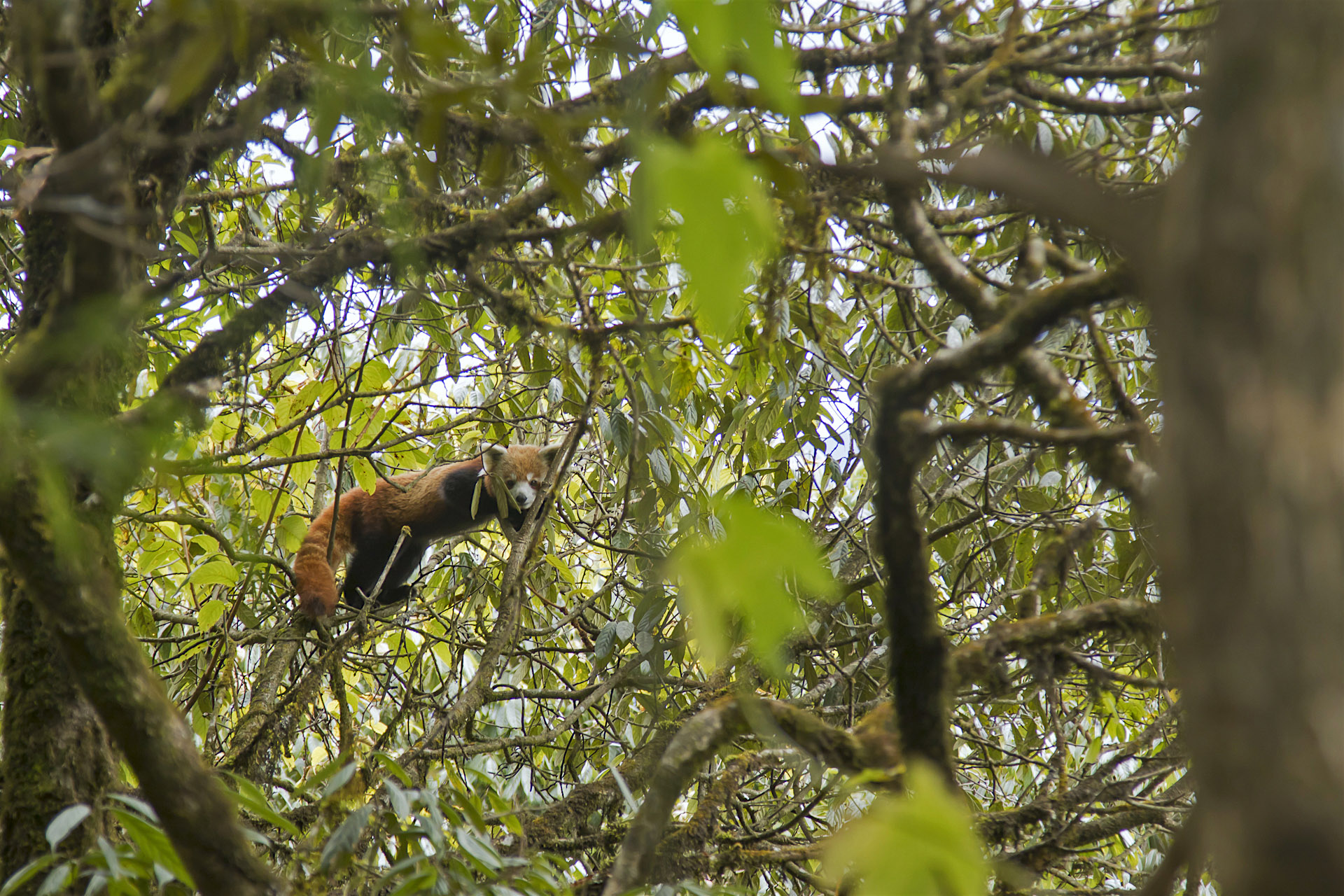When I first told my family and friends of my plans to go to the Himalayas and photograph a Red Panda, they were baffled. Most didn’t even know what a Red Panda was. The rest wondered how I’d manage to photograph a mammal that has only been seen by very few people in the wild. I realised most people only know of the Giant Panda, a species not closely related to the Red Panda.
I ended up spending a week in the eastern Himalayas with some friends who had been recceing the mountains for the pandas. It was a one-of-a-kind experience; primarily thanks to us having to rough it out on difficult terrain. We trekked 8-10km daily and I finally lucked out, photographing them in their natural habitat.
The Red Panda (Ailurus fulgens) (also known as Firefox, Lesser Panda, Red Bear-cat, and Red Cat-bear) is listed as endangered on the IUCN Red List. As of 2014, there are less than 10,000 of them left in the world, according to the World Wildlife Fund.
Red Pandas have russet-coloured, thick fur and a raccoon-like face with white markings. According to Indian Mammals – A Field Guide by Vivek Menon, its “paws have strong, inwardly curved and short claws that are semi-retractible. This, a false thumb and the ability to rotate its ankle more than other arboreal carnivores are the anatomical features that assist its tree-climbing and headlong descent”.
Red Pandas communicate via squeaks, snorts and whistles.
They eat insects and fruits (rarely). Bamboo makes up about 98 per cent of their diet, but they prefer only the leaves and the most tender shoots; unlike the Giant Pandas, which eat all of the bamboo (except its roots).
Part of the difficulty in conserving the species is because of its unique habitat. These mammals require proximity to water sources, appropriate forest cover and altitude, and sufficient bamboo. Their ideal habitats are steadily degrading because of an increase in human encroachment.
Sources: IUCN.org; Indian Mammals – A Field Guide, Vivek Menon; Smithsonian



